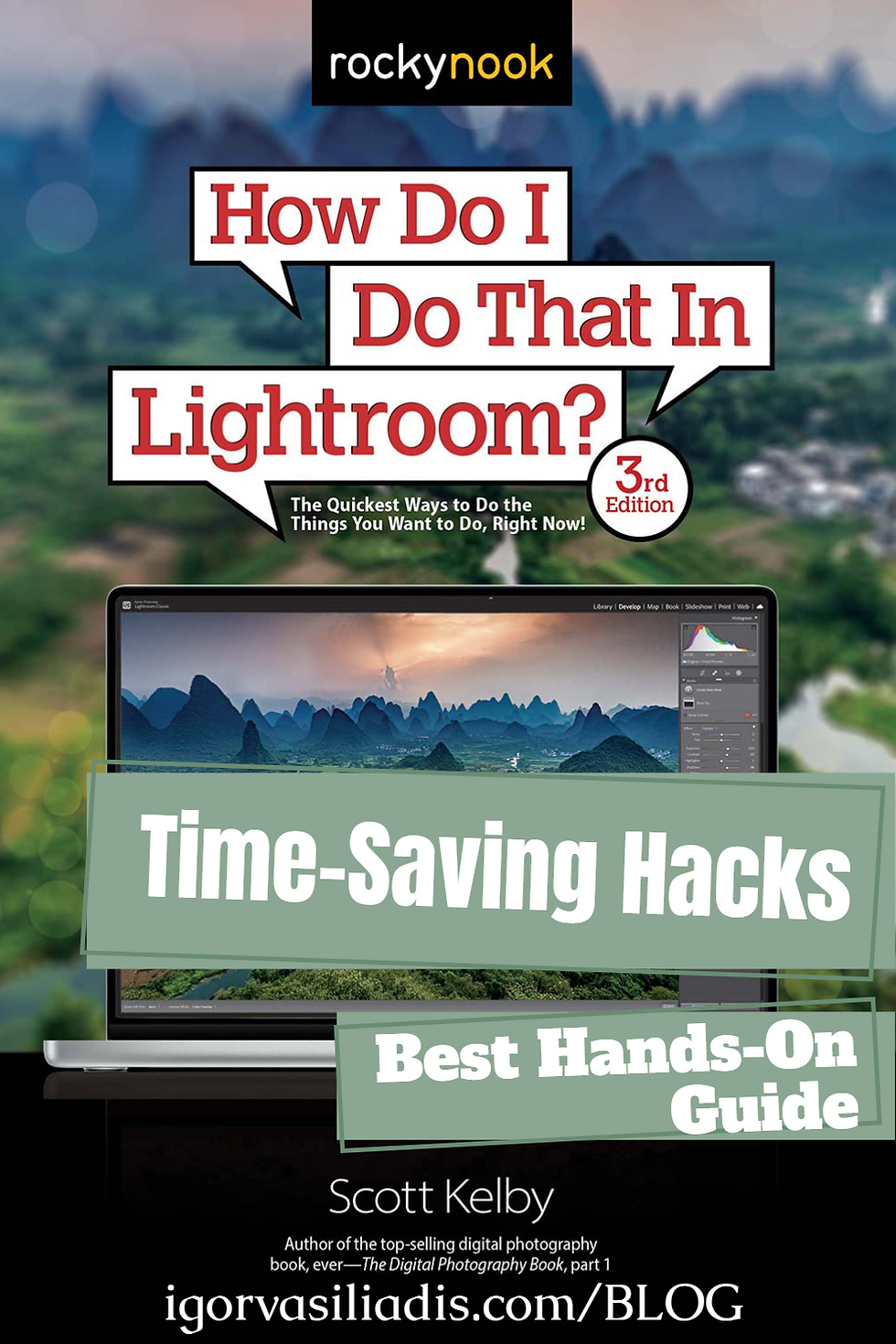Adobe LightRoom time-saving hacks
- Igor Vasiliadis

- Oct 28
- 3 min read
Why This Book Is a time-saver for Every Photographer and Visual Artist
An Art & Fashion Photographer’s First-Look
When I first opened and began reading How Do I Do That in Lightroom? (available as e-book and printed version: click here), I immediately realized this wasn’t just another manual on post-processing. It felt more like an invitation into a creative lab — a toolkit of visual transformations, clever tricks, and editing techniques that turn photography into true art.
As an art and fashion photographer working at the intersection of digital imaging and fine art, I’m always looking for tools that expand creative possibilities. This book does exactly that — it helps you unlock Lightroom’s full potential to refine your vision and take creative control of every pixel.
From Practice to Magic: Why This Book Matters
In today’s visual culture, the real artistic value of an image often emerges not just in the moment of capture, but during the editing process. The author walks you through techniques that let you:
Master tone, atmosphere, and emotional impact.
Reinvent your own work through digital manipulation and reinterpretation.
Create alternate versions that often sell better than the original.
For me — as someone who creates both fine art and design-oriented visuals (like Wall Art, Wallpaper, Textiles, and Luxury Prints) — many of these Adobe LightRoom time-saving hacks are pure gold. They’re directly usable in both artistic and commercial workflows.
Adobe LightRoom time-saving hacks
If you’re still unsure about diving deeper into post-production, trust me — Lightroom is not just for exposure correction. This book reveals hundreds of ways to sculpt your image’s final mood:
Advanced local adjustments — for cinematic lighting and emotional focus.
HSL and color curve mastery — to craft unique, signature color palettes.
Architectural and textile applications — ideal for artists printing on canvas, fabric, or wallpaper.
Versioning workflows — to produce multiple visual interpretations from a single photo.
As someone who uses Lightroom daily, I can tell you — there’s no filler here. Every technique can be adapted for portrait, fashion, landscape, or design work.
Why It’s Especially Valuable for Artists and Interior Designers
If your images are meant to live beyond the screen — as prints, wallpapers, or textiles — this book is your blueprint. It teaches you to think about editing as a design phase: adjusting composition, contrast, and tone for print accuracy and emotional resonance.
You’ll also find guidance on color management, ICC profiles, and resolution settings — essential for large-format printing and fabric reproduction.
My Recommended Experiments to Try from the Book
The author presents hundreds of ideas, but here are three that I personally use every day:
Create print versions: Develop 3–5 tonal variants of each image (soft, contrasty, pastel, cinematic) and test which one works best for your medium — fabric, paper, or mural.
Light sculpting: Use radial and gradient masks to subtly guide attention — perfect for patterns or repeating compositions.
Add texture: Blend in soft noise or paper texture for a rich, moody tone — making your work feel hand-printed and emotionally grounded.
See Real-World Examples of These Techniques
You can explore how these digital imaging methods translate into finished works in my gallery at Saatchi Art.There you’ll find my limited editions, fashion-inspired art prints, and fine-art photography collections — all of which rely on the kind of color, texture, and tonal control this book teaches.
Who Should Read This Book
Photographers ready to elevate their editing and storytelling skills.
Textile and interior designers who transform photography into product design.
Collectors and galleries curious about how digital post-processing enhances fine-art printing.
Final Thoughts: Experiment, Transform, and Inspire
Visual mastery grows from curiosity and experimentation. How Do That in Lightroom – Quickest is not just a tutorial; it’s a creative catalyst — a book that pushes you to explore hundreds of Lightroom tricks and rediscover your own imagery.
If you’re ready to elevate your photography — from art prints to commercial projects and even wallpaper or textile design — start with this book. Then visit my Saatchi Art gallery for inspiration on how these editing principles come alive in real-world fine art.





Comments